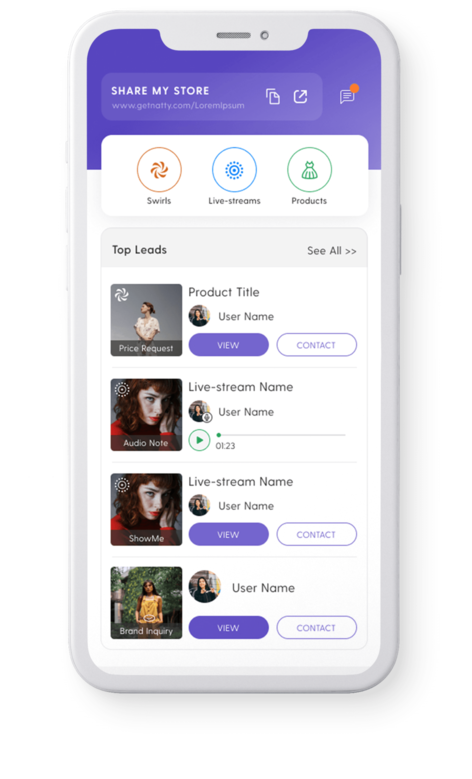The resilience of the Indian entrepreneurs to survive and stay afloat during the COVID-19 pandemic has been breathtaking. And, the story of Vadodara-based serial entrepreneur Kaizad Hansotia is one among many.
Kaizad has worn many hats since he started his journey at the age of 16 as a door-to-door salesman. He has led many battles as a one-man army for years — from becoming the co-founder of test preparation platform MyTestBuddy in 2012 to starting up an online-to-offline (O2O) designer brands aggregator GetNatty in 2016.
The same year, he met his co-founder Bheshaj Joshi, an ex-NASA executive and co-founder of healthtech startup e-mediworld.
“In three years with MyTestBuddy, we launched more than nine mobile apps, reaching over one million students and 25+ educational institutions. In four years with GetNatty, we onboarded 350+ brands, servicing more than 25,000 customers from 10+ cities, while raising seven-figure funding round in 2019,” reminisces Kaizad.
The startup raised an undisclosed seed round from entrepreneurs-turned-investors, led by Abhay Kumar, CMD of Grihapravesh Buildteck; Binod Choubey; Firoze Sethna, and Parth Patel.
However, in early 2020, as soon as the co-founders piloted a hyperlocal in-store concept in Mumbai, the country was shutdown.
“We launched 25+ in-stores (shop-in-shop) in partnership with our key designer brands such as A Hummingway, Mandira Bedi, Archana Kochhar, Timannya by Purvi, and others. But, as the lockdown swept in, we received a setback, and had to go back to the drawing board,” he adds.
The pivot
One of the fundamental observations made by the team during the initial COVID-19 phase was — lockdown or no lockdown, buyers and sellers in a marketplace are always going to find alternative ways to connect. GetNatty witnessed platforms, including Zoom and WhatsApp, gain popularity among partner brands, while the traction increased among consumers in the higher age bracket.
“It's no secret that videos are the most effective way of storytelling. While adding video-in shopping experience was already on our cards, in May 2020, we decided to fast track our product development plans from 12 months to just under three months to launch our first MVP in the form of an interactive video shopping app in August 2020,” he says.
The app enables brands to create interactive and shoppable 15-second short-videos called ‘SWIRLS,’ digitise offline products, share catalogues, and track performance. A private beta pilot in December saw 11 minutes of average time spent per user with over 57 percent engagement rate, leading to a nine percent conversion rate. This, by far, is at least 3-5X higher than the industry standards of one to three percent.

“In three months, we saw our app getting downloaded by more than 25,000 users with over 50 percent month-on-month organic growth, and on-boarded over 100 new brand partners that saw a 57 percent increase in engagement rates,” Kaizad says.
The successful beta implementation pushed the GetNatty team to pivot from GetNatty.com, a B2C marketplace/aggregator model, to GetNatty.live, which is going to be a B2B vertical SAAS model.
The new product: GetNatty.Live
Recently, the team rolled out the official GetNatty.Live site with over 50 brand partners from fashion, beauty, and lifestyle. It primarily aims to reach SMBs, and wants to position itself as a brand and sector-agnostic, vertical SAAS live video shopping solution, leveraging its network of over 1000 influencers.
- USP: The key USP of the platform lies in its simple, low-tech, reliable, and immersive virtual shopping solution. It uses an adaptive, low-latency, and infinitely scalable one-to-many live video streaming technology with direct shopping features that works on any web or mobile device.
- How it works: All one needs to do is sign up, create shoppable videos, and start selling, or they can just copy-paste the given shortcode/use plug-in into their existing ecommerce site/app. Shoppers don't need to download an app and can do a virtual visit to an offline store.
“This will enable a similar experience like that of an offline store visit where they get to interact, ask queries, browse multiple products, and avail a personalised shopping experience in real-time, which is tailored to their needs,” Kaizad explains.
- The tech stack: The platform was initially built on PHP CodeIgnitor framework. Now, it's been transitioned to React/Node. The new microservices are built on Python to enable ML/AI services.
Both the Android and iOS apps are 100 percent natively developed with the respective SDKs. The startup has set up its own VoD and live streaming server on DigitalOcean with CDN for low-video latency.
“Building on Google’s AI backbone, we are using Google Lens to develop computer vision deep learning to classify and tag elements in images, as well as videos. In the near future, we will apply this model to live streaming sessions to extract real-time analysis of user behaviour,” Kaizad says.

Next play: New categories, AI assistant, and more
Going ahead, the founders plan to add new categories, including health and wellness, home and living, premium food, and confectionery items to the platform. It is also looking to offer an AI-powered virtual sales assistant built on data science, computer vision, and human behaviour modelling to provide:
- Hyper-personalised customer experience;
- Intelligent business insights;
- Automate most of the sales tasks that require human interaction.
“Our target is to reach over 1000 brand partners and expand our user base to more than one million active users in the next six to 12 months. We also want to strengthen our leadership position domestically in Tier I, and II cities, as well as initiate expansion to the international markets, particularly the North America and the MENA region,” Kaizad says.
Starting in China three years ago, live shopping already makes up more than 10 percent of ecommerce sales, with the US and European markets catching up fast. It is estimated that live video shopping will be more than a $4 billion market in India with over 50 million live-streamers by 2025.
The video-commerce segment is expected to grow over 50 percent CAGR, cornering about 15 percent of the total ecommerce market share, amounting to over $30 billion.
In the context of India, the biggest challenge for brands will be to create quality video content that appeals to their customers and entertain them enough to keep coming back.
“Internally, we are calling this the ‘shoppertainment effect.’ This will play a crucial role in creating a strong brand recall value. We are even speaking to a few influencers marketing agencies to be able to work together with us to solve this problem of creating video content for our brand partners that would require a certain level of selling skills facing the camera,” Kaizad says.
Edited by Suman Singh
Link : https://yourstory.com/2021/01/pivot-and-persist-getnatty-live-video-shopping-saas-startup
Author :- Meha Agarwal ( )
January 12, 2021 at 05:25AM
YourStory

